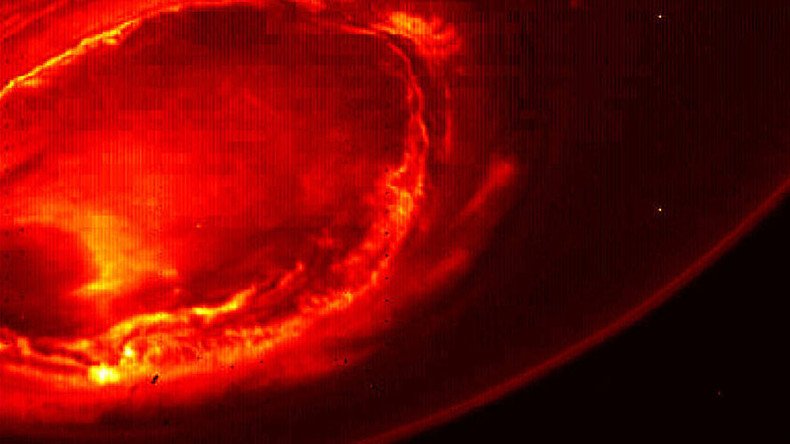NASA's Juno spacecraft captures eerie sounds from Jupiter (VIDEO, POLL)

NASA’s mission to lay bare the mysteries of Jupiter has already yielded images of the planet’s intense auroras, but the US space agency points out that the dazzling phenomenon also packs a mean - and somewhat terrifying - soundtrack.
Launched from Cape Canaveral, Florida in 2011, the spacecraft Juno carried out the first of its close-up flybys of the gas giant last month.
READ MORE: NASA’s Juno spacecraft makes first close flyby of Jupiter
At least 35 more trips around the planet are expected up until February 2018, when Juno will finally leave Jupiter’s orbit.
Today is the day of my #Jupiter closest approach! I’ll skim past the planet at a mere 2,600 miles above the clouds. pic.twitter.com/QJ8u5aJWAF
— NASA's Juno Mission (@NASAJuno) August 27, 2016
Moving at the incredible speed of 130,000 miles per hour, the craft flew to within 2,600 miles of the largely hydrogen orb on August 27.
Images from the close-up recon mission have since provided glimpses of Jupiter’s north and south poles, its persistent Great Red Spot cloud covering, and the spacecraft’s approach to the planet 121 times larger than Earth.
Hot stuff. During #Jupiter approach, I captured the planet’s glow in infrared light https://t.co/mVWrzSlV9opic.twitter.com/9kaRIl2k9n
— NASA's Juno Mission (@NASAJuno) September 2, 2016
While Juno may have given the world unprecedented views of Jupiter’s stunning lightshow, it also picked up radio signals from the planet’s intense auroras.
NASA has posted thirteen hours of compressed Juno audio on Twitter and the sounds are incredibly spooky.
According to NASA, the unusual noises were heard shortly after Juno’s closest approach to Jupiter and ranged in frequency from 7 to 140 kilohertz - a similar range to the sounds produced by a bottlenose dolphin, for example.
Experts at NASA say the track is a converted “voiceprint” of those radio signals, were they to be heard out loud in space.
What do Jupiter’s auroras sound like? Our @NASAJuno spacecraft took a recording! Listen: https://t.co/CTIpf7XlgXpic.twitter.com/Txsj2RFWsW
— NASA (@NASA) September 5, 2016
NASA’s recording has prompted skeptical reactions from some social media users. Guesses as to the ‘true origins’ of the sounds range from indications of alien life to more innocuous sources like wind.
'Chilling, alien-like sounds recorded coming from Jupiter... could be made by enormous creatures living in the... https://t.co/286IXM99y2
— living in the future (@LITFmag) September 5, 2016
@NASAJPL@NASAJuno Jupiter growls at Juno. Telling it to stay away.
— SUFANbowserjr (@SUFANbowserjr) September 5, 2016












